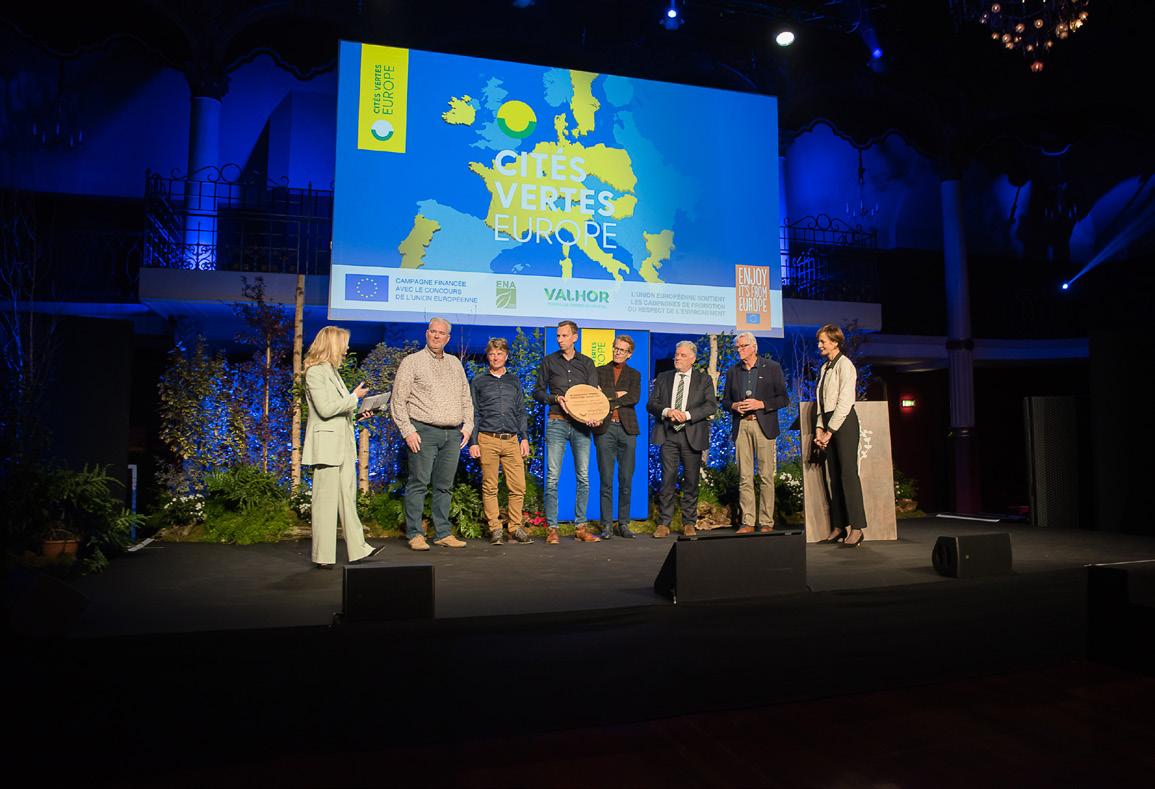
4 minute read
ROCKET SCIENCE
EUROPE
The Dutch city of Alkmaar is crowned Europe’s greenest city
Advertisement
After Beringen in Belgium in 2020 and Nantes in France in 2021, Alkmaar in the Netherlands has won the 2022 Green Cities Europe Award recognising its inspiring "Greening & Biodiversity" programme. The Green Cities Europe Awards took place at Les Victoires du Paysage in Paris, France’s national landscape awards. Surrounded by polders and crossed by canals, Alkmaar is a charming Dutch city famous for its cheese market. It is also a dynamic city which chose a local pragmatic approach to address environmental challenges. Knowing that plant solutions are effective in fighting urban warming, flooding risks and biodiversity loss, Alkmaar is developing its "Greening & Biodiversity" programme. In just a few months, various neglected sealed spaces were transformed into local green oases.
Alkmaar’s objective is to create 50,000 m� green spaces in seven years.
Stadswerk072, the organisation responsible for the management and maintenance of Alkmaar, has grabbed an opportunity with both hands. The first step was to identify all sealed spaces that could benefit from a quick transformation: small squares, banks, car parks and roundabouts. These watertight and lifeless areas are then de-sealed to restore soil permeability. It important is also that all projects actively involve residents in the planning. Finally, the plant selection needs to focus on biodiversity, with many trees, berry-bearing shrubs, wildflowers, flowering bulbs, and perennials. In two years, 50 per cent of the objective has already been achieved with several mini-parks, urban flower meadows, newly planted banks, and biodiversity-friendly roundabouts. These targeted and easy-toimplement interventions have impacted the city and its inhabitants, improving the quality of life and local biodiversity and restoring the natural water cycle. Alkmaar's "Greening & Biodiversity" project thrilled the European jury because it shows how plant-based solutions can easily provide local mitigation to our current environmental challenges. This "Quick Win" approach transforms the city from grey to green, based on four pillars of local action: de-sealing, involving residents, planting, and welcoming biodiversity. Any European city can follow Alkmaar's approach to a green living environment without excuses, restrictive rules, or delays. Poland ended 2nd with Czyżyny Park in Krakow, and Sweden 3rd with Växtrum in Lerum. https://award.thegreencities.eu/award-2022/the-netherlands/ https://www.youtube.com/watch?v=99kjZUL-ZrE&t=68s
ROCKET SCIENCE
Industry veteran, and former FCI publisher, Jaap Kras provides
background to the Green City initiative that started in space.
“In the 1970s, the American Apollo programme sought to answer the question: how do we make oxygen where there is no oxygen in space? Plants seemed to be the answer. Plants produce oxygen, clear the air, and consume carbon dioxide (CO�).
Based on these NASA studies on plants in the early eighties, the Dutch Flower Council, conducted by Niek van Rest, was inspired to use these basic ideas for a campaign to improve the indoor environment by placing plants in the rooms. The idea was to sell more plants in houses and offices to benefit those living and working in these rooms. It appeared that the performance of the people working in a green environment with plants improved: fewer headaches, better concentration, and more pleasant working hours. Growers like Peter Olsthoorn of Pothos Plants, and later many others, picked up these results and started to sell plants under the slogan ‘Air so pure’.
Further scientific studies were performed using flowers and plants and extended to using trees and shrubs. The Dutch Flower Council cooperated with the propaganda council of the plant- and tree growers to introduce space between PPH (Plant Publicity Holland) conducted by Jan Habets – often cited as the father of the Green City movement. In the early 1990s, scientific studies showed the importance of plants and parks in cities. When enough parks and green areas are available for the citizens, criminality decreases, sports activities increase, the climate improves, less dust and more oxygen, and the temperature goes down in hot summers, with parks reporting less heat than in the rest of the city.
Also, citizens like to look at a green environment and are stimulated to go outside, so people are happier. In addition, the property prices for properties located around parks are higher. But parks and green areas have advantages for every citizen in every city. Along with cities’ greening, plans must be made to reforest. Trees must be planted. And to produce these trees and shrubs, we need growers. In many countries, growers are organised in producer associations. Supporting the industry, the AIPH globally represents 40 producer associations and 36 enterprises associated with ornamental horticulture. They lead global thinking on the successful integration of nature into the built environment through its Green City initiative, which promotes the essential role of plants in creating vibrant urban areas where people and businesses can thrive.
The importance of green in cities and reforestation is increasingly becoming recognised and accepted. One of AIPH’s affiliate members, Wageningen University & Research, is currently studying tree varieties that perform the best in urban environments.
Considering climate change and the necessity to do something against the pollution and heating of the earth, greening the cities and reforestation action now cannot be underestimated.”










